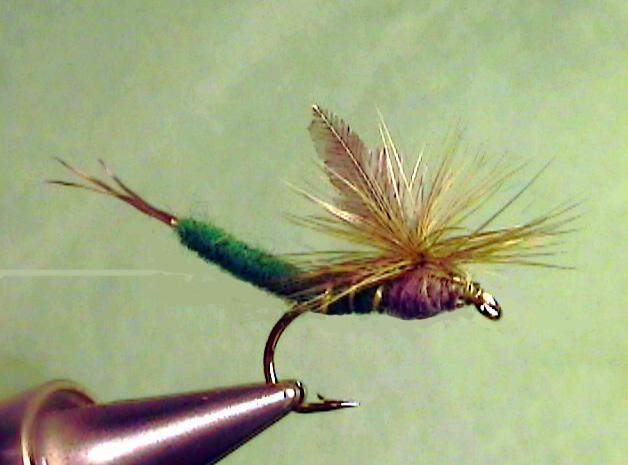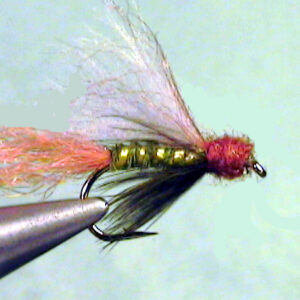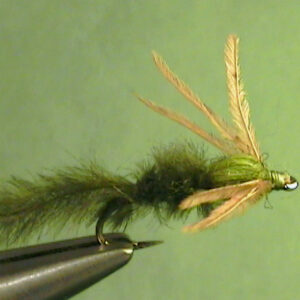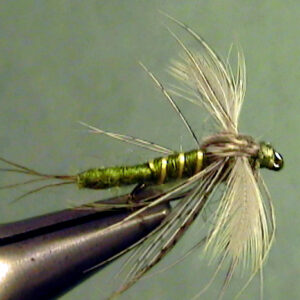Hook Size: 10/12
This imitates the Western Green Drake dun. It resembles the newly emerged insect as it floats on the surface during the hatch. Notice the two wings look like the real thing.
I think one thing that makes this large mayfly so popular is that trout will readily take the
dun during a hatch. The dun is the most important stage of the Western Green Drake’s
life as far as the dry fly angler is concerned. This mayfly may ride the surface a relatively
long time – as long as a minute or two. At the time of the season these drakes hatch, it
usually takes some time for them to dry their wings, During this time, they are very
subject to being eaten by a trout.
The duns usually emerge in smoother flowing water, not the fast moving, broken surface
type of water. That give the trout plenty of time to closely examine the dun. We think this
gives our simit-realistic Perfect Fly Dun fly a slight edge over most of them.
Some anglers think the trout become selective on either the emergers or duns. I don’t
buy that, but I do think the trout will eat either one, depending on the opportunity
available. I don’t believe they become selective on the particular stage of life. I guess it’s
possible where there are huge hatches taking place, but most of the time the hatches are
not that huge. Often in a particular area of a stream, the hatch only last three or four
days and unless it’s heavily overcast, only for an hour or two each day.
I mentioned in the emerger article that we normally use a trailing shuck version of the
emerger. The Green Drake dun is a dry fly and that’s why we prefer it. As long as we can
catch fish on the dry fly, we are going to use one instead of a wet fly or nymph.
Presentation:
Normally, the best presentation is an upstream cast to the calmer areas of water. If you
are fishing pocket water, this is certainly the way to go. If you are fishing rather smooth
water, then a downstream, or a down and across presentation may be best.
In most cases, you leaders should rather long. It should have a three foot long 4x or 5X
tippet for most waters these mayflies hatch in. In very clear water you may need to use an
even longer leader and smaller tippet.
You will usually be able to spot individual trout rising to the duns and/or emergers. This
is especially true if you are fishing smooth water. Even in fast pocket water you should
still be able to detect the trout eating the duns if you pay close attention.
Trout take the emergers in the surface skim with a swirl that may not break the surface
of the water. When they take the duns they usually do break the surface and are of
course, much more noticeable.
In pocket water we normally stick to short, up or up and across presentations. We try to
focus on the pockets of slower moving water near the fast water runs and riffles. If we
are not able to find an individual fish eating the drakes, we try to cover a lot of water
with the short upstream cast.
In smooth water we still try to use the up or up and across presentation if we can do so
without spooking the trout. We almost always use a reach cast doing this. There are
times and places, depending on the water, that it is almost impossible to get close to the
trout without spooking them. In these cases you are better off using a down and across
presentation.
Copyright 2013 James Marsh



